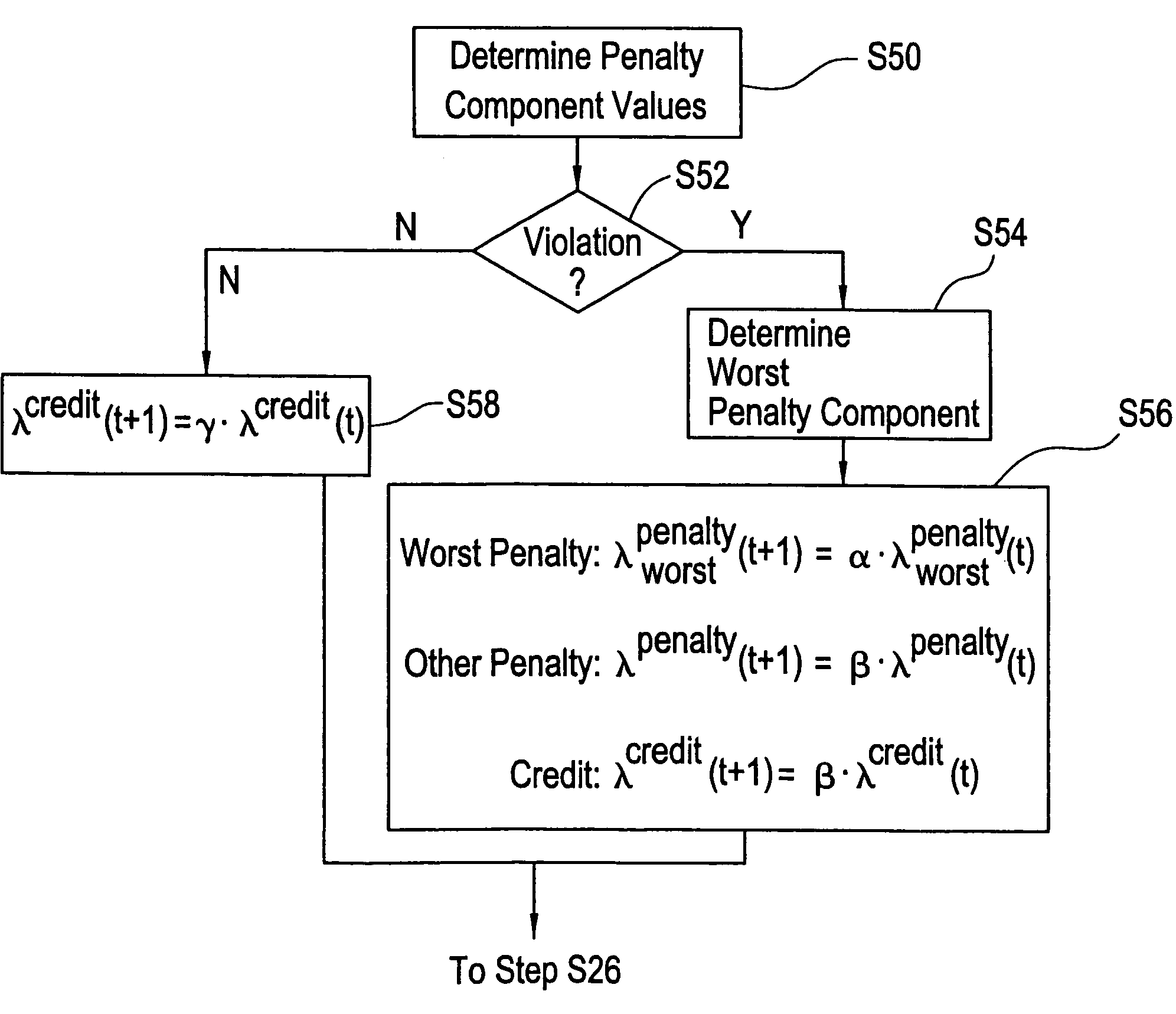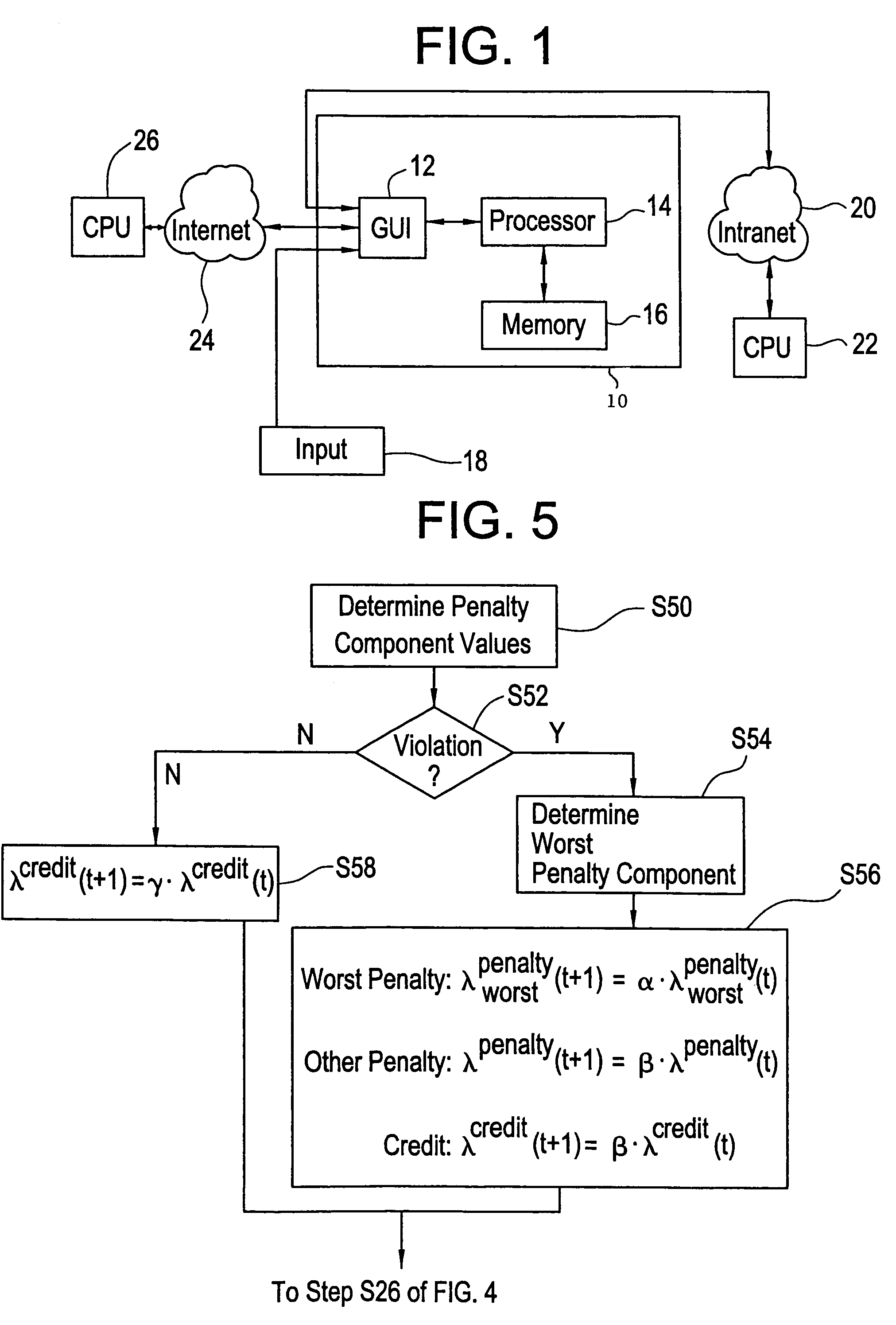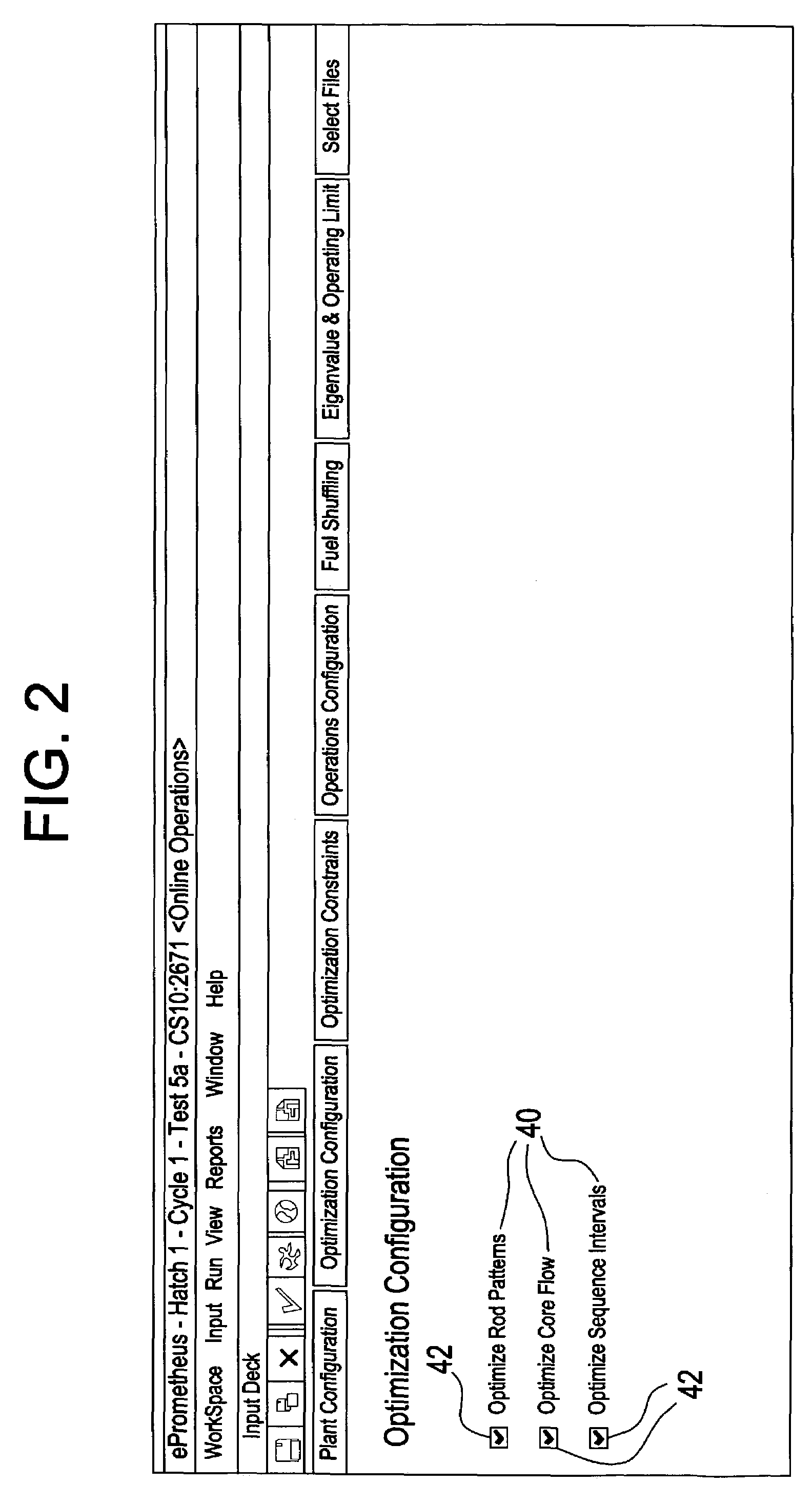Method and apparatus for adaptively determining weight factors within the context of an objective function
- Summary
- Abstract
- Description
- Claims
- Application Information
AI Technical Summary
Benefits of technology
Problems solved by technology
Method used
Image
Examples
Embodiment Construction
The Generic Objective Function
[0020]The present invention applies, but is not limited to, a generic definition of an objective function, which is applicable across a wide variety of constraint and optimization problems. Namely, the generic objective function is applicable to any large scale, combinatorial optimization problem in discrete or continuous space such as boiler water reactor core design, pressurized water reactor core design, transportation scheduling, resource allocation, etc. The generic objective function is defined as a sum of credit and penalty components. A penalty component includes a penalty term multiplied by an associated penalty weight. A credit component includes a credit term multiplied by an associated credit weight. The credit terms represent the optimality conditions for the problem. The penalty terms represent the constraints for the problem. Each credit term is a mathematical expression that quantifies an optimality condition. Each penalty term is a math...
PUM
 Login to View More
Login to View More Abstract
Description
Claims
Application Information
 Login to View More
Login to View More - R&D
- Intellectual Property
- Life Sciences
- Materials
- Tech Scout
- Unparalleled Data Quality
- Higher Quality Content
- 60% Fewer Hallucinations
Browse by: Latest US Patents, China's latest patents, Technical Efficacy Thesaurus, Application Domain, Technology Topic, Popular Technical Reports.
© 2025 PatSnap. All rights reserved.Legal|Privacy policy|Modern Slavery Act Transparency Statement|Sitemap|About US| Contact US: help@patsnap.com



